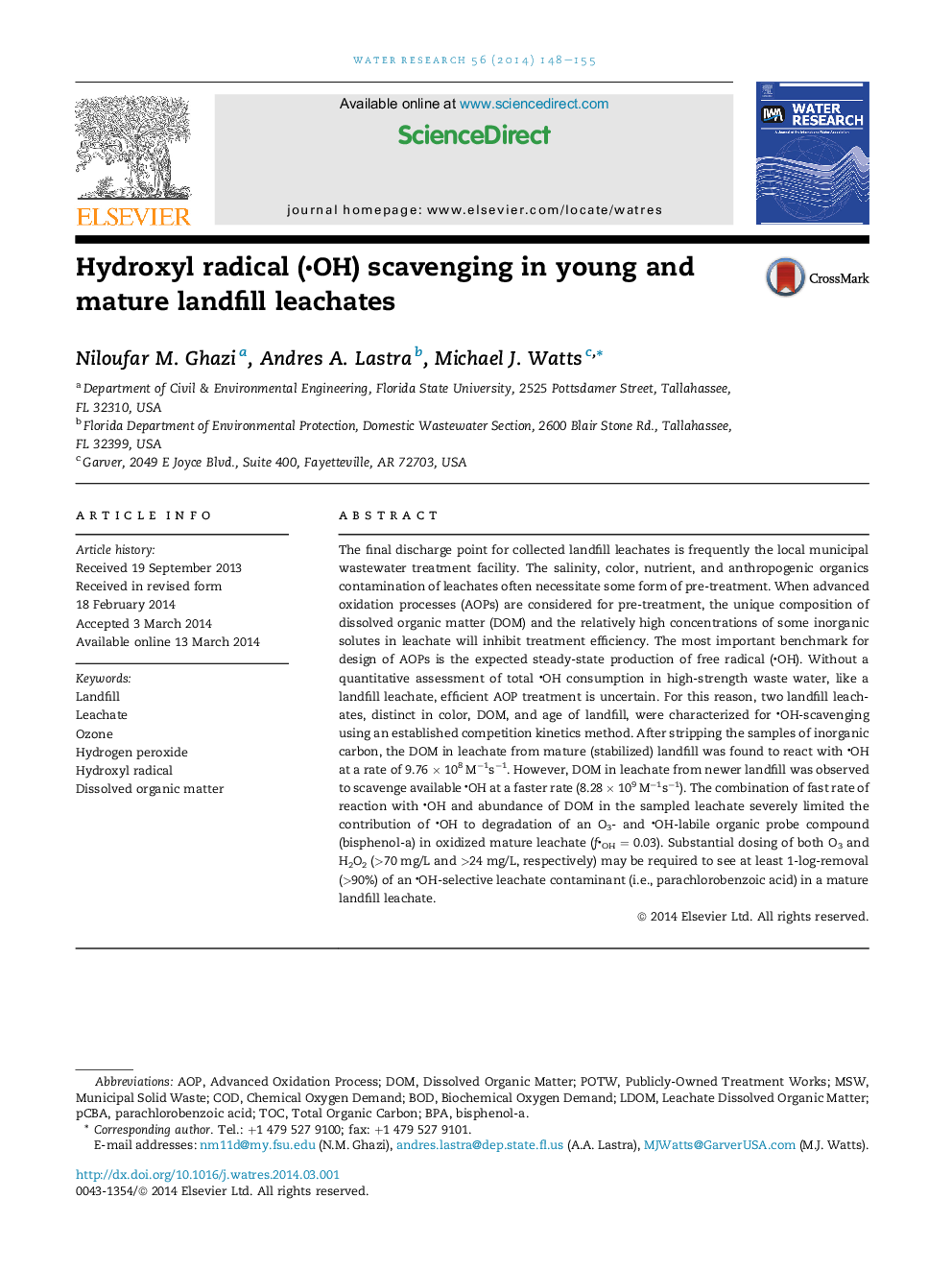| Article ID | Journal | Published Year | Pages | File Type |
|---|---|---|---|---|
| 6366889 | Water Research | 2014 | 8 Pages |
â¢Observed indirect ozone oxidation of bisphenol-a was severely limited in landfill leachate.â¢Using competition kinetics, the hydroxyl radical scavenging rate of leachate DOM was assessed.â¢Mature leachate DOM scavenges ·OH at twice the reported rate of wastewater DOM.â¢A significant decrease in ·OH scavenging rate can be observed as leachate ages or stabilizes.
The final discharge point for collected landfill leachates is frequently the local municipal wastewater treatment facility. The salinity, color, nutrient, and anthropogenic organics contamination of leachates often necessitate some form of pre-treatment. When advanced oxidation processes (AOPs) are considered for pre-treatment, the unique composition of dissolved organic matter (DOM) and the relatively high concentrations of some inorganic solutes in leachate will inhibit treatment efficiency. The most important benchmark for design of AOPs is the expected steady-state production of free radical (OH). Without a quantitative assessment of total OH consumption in high-strength waste water, like a landfill leachate, efficient AOP treatment is uncertain. For this reason, two landfill leachates, distinct in color, DOM, and age of landfill, were characterized for OH-scavenging using an established competition kinetics method. After stripping the samples of inorganic carbon, the DOM in leachate from mature (stabilized) landfill was found to react with OH at a rate of 9.76Â ÃÂ 108Â Mâ1sâ1. However, DOM in leachate from newer landfill was observed to scavenge available OH at a faster rate (8.28Â ÃÂ 109Â Mâ1sâ1). The combination of fast rate of reaction with OH and abundance of DOM in the sampled leachate severely limited the contribution of OH to degradation of an O3- and OH-labile organic probe compound (bisphenol-a) in oxidized mature leachate (fOHÂ =Â 0.03). Substantial dosing of both O3 and H2O2 (>70Â mg/L and >24Â mg/L, respectively) may be required to see at least 1-log-removal (>90%) of an OH-selective leachate contaminant (i.e., parachlorobenzoic acid) in a mature landfill leachate.
Graphical abstractDownload high-res image (186KB)Download full-size image
